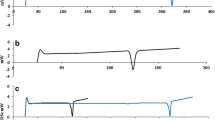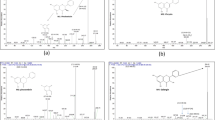Abstract
Recurrent oral ulcer is a painful oral mucosal disorder that affects 20% of the world’s population. The lack of a radical cure due to its unknown underlying cause calls for innovative symptomatic treatments. This work reports a hyaluronic acid-based dissolvable microneedle patch (ROUMN patch, short for recurrent oral ulcer microneedle) loaded with dexamethasone acetate, vitamin C and tetracaine hydrochloride for the treatment of recurrent oral ulcers. The ROUMN patch shows enhancement in both the anti-inflammatory effect elicited by dexamethasone and the pro-proliferation effect of vitamin C. In vitro experiments show that ROUMN has a higher efficiency in suppressing lipopolysaccharide (LPS)-induced interleukin-6 (IL-6) expression than dexamethasone alone. Cell proliferation and migration were also significantly promoted by ROUMN compared to vitamin C alone. The healing-promoting effect of ROUMN was also verified in vivo using an acetic acid-cauterized oral ulcer model in rats. ROUMN as a treatment accelerated the healing process of oral ulcers, shortening the total healing time to 5 days compared with the 7 days required by treatment using watermelon frost, a commonly used over-the-counter (OTC) drug for oral ulcers. The rapid dissolution of the hyaluronic acid-based microneedles and the superior healing-promoting effect of the drug combination could lead to a broad application prospect of the ROUMN patch in the treatment of recurrent oral ulcers.
Graphic abstract





Similar content being viewed by others
References
Natah SS, Konttinen YT, Enattah NS et al (2004) Recurrent aphthous ulcers today: a review of the growing knowledge. Int J Oral Maxillofac Surg 33:221–234. https://doi.org/10.1006/ijom.2002.0446
Shah K, Guarderas J, Krishnaswamy G (2016) Aphthous stomatitis. Ann Allergy Asthma Immunol 117(4):341–343. https://doi.org/10.1016/j.anai.2016.07.005
Muñoz-Corcuera M, Esparza-Gómez G, González-Moles MA et al (2009) Oral ulcers: clinical aspects. A tool for dermatologists. Part II. Chronic ulcers. Clin Exp Dermatol 34(4):456–461. https://doi.org/10.1111/j.1365-2230.2009.03220.x
Fitzpatrick SG, Cohen DM, Clark AN (2019) Ulcerated lesion of the oral mucosa: clinical and histologic review. Head Neck Pathol 13(1):91–102. https://doi.org/10.1007/s12105-018-0981-8
Edgar NR, Saleh D, Miller R (2017) Recurrent aphthous stomatitis: a review. J Clin Aesthet Dermatol 10(3):26–36
Liu C, Zhou Z, Liu G et al (2012) Efficacy and safety of dexamethasone ointment on recurrent aphthous ulceration. Am J Med 125(3):292–301. https://doi.org/10.1016/j.amjmed.2011.09.011
Liu J, Zeng X, Chen Q et al (2006) An evaluation on the efficacy and safety of amlexanox oral adhesive tablets in the treatment of recurrent minor aphthous ulceration in a Chinese cohort: a randomized, double-blind, vehicle-controlled, unparallel multicenter clinical trial. Oral Surg Oral Med Oral Pathol Oral Radiol Endod 102(4):475–481. https://doi.org/10.1016/j.tripleo.2005.12.014
Zhang C, Liu Y, Li W et al (2019) Mucoadhesive buccal film containing ornidazole and dexamethasone for oral ulcers: in vitro and in vivo studies. Pharm Dev Technol 24(1):118–126. https://doi.org/10.1080/10837450.2018.1428814
Zhao X, Li X, Zhang P et al (2018) Tip-loaded fast-dissolving microneedle patches for photodynamic therapy of subcutaneous tumor. J Contr Release 286:201–209. https://doi.org/10.1016/j.jconrel.2018.07.038
Yang H, Wu X, Zhou Z et al (2019) Enhanced transdermal lymphatic delivery of doxorubicin via hyaluronic acid based transfersomes/microneedle complex for tumor metastasis therapy. Int J Biol Macromo 125:9–16. https://doi.org/10.1016/j.ijbiomac.2018.11.230
Bok M, Zhao ZZ, Jeon S et al (2020) Ultrasonically and iontophoretically enhanced drug-delivery system based on dissolving microneedle patches. Sci Rep 10(1):2027. https://doi.org/10.1038/s41598-020-58822-w
Snetkov P, Zakharova K, Morozkina S et al (2020) Hyaluronic acid: the influence of molecular weight on structural, physical, physicochemical, and degradable properties of biopolymer. Polymers 12(8):1800. https://doi.org/10.3390/polym12081800
Saha I, Rai VK (2021) Hyaluroic acid based microneedle array: recent application in drug delivery and cosmetology. Carbohydr Polym 267:118168. https://doi.org/10.3390/polym12081800
Ghazi K, Deng-Pichon U, Warnet JM et al (2012) Hyaluronan fragments improve wound healing on in vitro cutaneous model through P2X7 purinoreceptor basal activation: role of molecular weight. PLoS ONE 7(11):e48351. https://doi.org/10.1371/journal.pone.0048351
Ruan J, Li D, Tao H et al (2018) Effects of dexamethasone on the EGF mRNA levels and inflammatory factors in rabbits with oral ulcers. Pharm Bioprocess 6(3):119–125
Tu H, Zhang D, Barksdale AN et al (2020) Dexamethasone improves wound healing by decreased inflammation and increased vasculogenesis in mouse skin frostbite model. Wilderness Environ Med 31(4):407–417. https://doi.org/10.1016/j.wem.2020.07.003
Li X, Tang L, Lin YF et al (2018) Role of vitamin C in wound healing after dental implant surgery in patients treated with bone grafts and patients with chronic periodontitis. Clin Implant Dent Relat Res 20(5):793–798. https://doi.org/10.1111/cid.12647
Gunton JB, Girgis CM, Lau T et al (2021) Vitamin C improves healing of foot ulcers: a randomized, double-blind, placebo-controlled trial. Br J Nutr 126(10):1451–1458. https://doi.org/10.1017/S0007114520003815
Palmieri B, Vadalà M, Laurino C (2019) Nutrition in wound healing: investigation of the molecular mechanisms, a narrative review. J Wound Care 28(10):683–693. https://doi.org/10.12968/jowc.2019.28.10.683
O’Brien L, Taddio A, Lyszkiewicz DA et al (2005) A critical review of the topical local anesthetic amethocaine (Ametop™) for pediatric pain. Pediatr Drugs 7(1):41–54. https://doi.org/10.2165/00148581-200507010-00004
McGee DL (2017) Local and topical anesthesia. In: Roberts and Hedges’ Clinical Procedures in Emergency Medicine and Acute Care (7th Ed.). Elsevier, Amsterdam, pp 523-544.e3
Duarah S, Sharma M, Wen J (2019) Recent advances in microneedle-based drug delivery: special emphasis on its use in paediatric population. Eur J Pharm Biopharm 136:48–69. https://doi.org/10.1016/j.ejpb.2019.01.005
Hackethal J, Iredahl F, Henricson J et al (2021) Microvascular effects of microneedle application. Skin Res Technol 27(2):121–125. https://doi.org/10.1111/srt.12918
Bora P, Kumar L, Bansal AK (2008) Microneedle technology for advanced drug delivery: evolving vistas. Niper Crips 9(1):7–10
Choi JE, Zwirner J, Ramani RS et al (2020) Mechanical properties of human oral mucosa tissues are site dependent: a combined biomechanical, histological and ultrastructural approach. Clin Exp Dent Res 6:602–611. https://doi.org/10.1002/cre2.305
Bermudez DM, Herdrich BJ, Xu JW et al (2011) Impaired biomechanical properties of diabetic skin implications in pathogenesis of diabetic wound complications. Am J Pathol 178(5):2215–2223. https://doi.org/10.1016/j.ajpath.2011.01.015
Shen C, Ye W, Gong L et al (2021) Serum interleukin-6, interleukin-17A, and tumor necrosis factor-alpha in patients with recurrent aphthous stomatitis. J Oral Pathol Med 50(4):418–423. https://doi.org/10.1111/jop.13158
Kaewduangduen W, Visitchanakun P, Saisorn W et al (2022) Blood bacteria-free DNA in septic mice enhances LPS-induced inflammation in mice through macrophage response. Int J Mol Sci 23(3):1907. https://doi.org/10.3390/ijms23031907
Yang L, Wu G, Wu Q et al (2022) METTL3 overexpression aggravates LPS-induced cellular inflammation in mouse intestinal epithelial cells and DSS-induced IBD in mice. Cell Death Discov 8(1):62. https://doi.org/10.1038/s41420-022-00849-1
Velnar T, Bailey T, Smrkolj V (2009) The wound healing process: an overview of the cellular and molecular mechanisms. J Int Med Res 37(5):1528–1542. https://doi.org/10.1177/147323000903700531
Lu J, Wang Z, Ren M et al (2016) Antibacterial effect of gallic acid against aeromonas hydrophila and aeromonas sobria through damaging membrane integrity. Current Pharm Biotechnol 17(13):1153–1158. https://doi.org/10.2174/1389201017666161022235759
Zhao X, He X, Zhong X (2016) Anti-inflammatory and in-vitro antibacterial activities of Traditional Chinese Medicine Formula Qingdaisan. BMC Complement Altern Med 16(1):503. https://doi.org/10.1186/s12906-016-1475-4
Liu Z, Dou H (2022) Effects of four types of watermelon frost combination medications for the treatment of oral ulcers: a network meta-analysis. J Healthc Eng 2022:2712403. https://doi.org/10.1155/2022/2712403
Acknowledgements
This work was supported by the National Natural Science Foundation of China (Nos. 62003023, 32071407, 52073138, 52003018 and 52003019), Beijing Natural Science Foundation (No. 7212204), and Beijing Advanced Innovation Center for Biomedical Engineering and Beihang University.
Author information
Authors and Affiliations
Contributions
LQC and JL conceived the project, collected funding, and guided the experiments. YYH guided the animal experiments. YQW designed the experiments and provided guidance for the study. Microneedle design and fabrication were done by AAS. In vitro experiments and data collection were done by AAS and XRJ. In vivo experiments and data collection were done by YQW and SSY. Manuscript composition and revision were done by YQW and XRJ. LL, MZY and FSZ helped with some experiments.
Corresponding authors
Ethics declarations
Conflict of interest
The authors declare that there is no conflict of interest.
Ethical approval
This project was approved by Xiamen University Animal Care and Use Committee. The approval code number is XMULAC20210063. All institutional and national guidelines for the care and use of laboratory animals were followed.
Supplementary Information
Below is the link to the electronic supplementary material.
Rights and permissions
Springer Nature or its licensor (e.g. a society or other partner) holds exclusive rights to this article under a publishing agreement with the author(s) or other rightsholder(s); author self-archiving of the accepted manuscript version of this article is solely governed by the terms of such publishing agreement and applicable law.
About this article
Cite this article
Wang, Y., Sheng, A., Jiang, X. et al. Multidrug dissolvable microneedle patch for the treatment of recurrent oral ulcer. Bio-des. Manuf. 6, 255–267 (2023). https://doi.org/10.1007/s42242-022-00221-3
Received:
Accepted:
Published:
Issue Date:
DOI: https://doi.org/10.1007/s42242-022-00221-3




